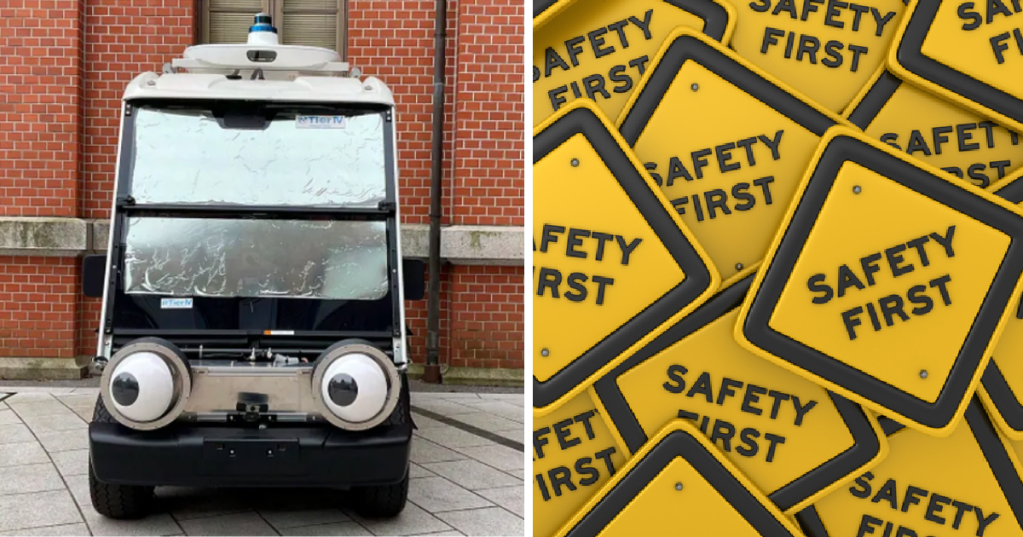When brainstorming ideas about how to make the road safer once self-driving cars hit the road, very few people probably threw out the idea “let’s put giant googly eyes on the cars.”
Yet someone did, and shockingly, it appears to work.
It was Japanese researchers that had the idea to put huge, cartoonish googly eyes to the front of the cars. The big, flitting eyes let pedestrians know that they have been spotted by the cars’ detection system and are unlikely to be run over in the crosswalk.
Image Credit: YouTube
“If the car is not looking at the pedestrian, this implies that the car does not recognize the pedestrian. Thus, pedestrians can judge that they should not cross the street, thereby avoiding potential traffic accidents.”
It’s odd, but since we’re trusting artificial intelligence with the lives of human beings, it could be a necessary safety precaution.
The “car” in the study was actually a golf buggy with tinted front windows. The large eyes were controlled by researchers remotely, and a virtual reality person crossed in front of the car (for obvious safety reasons).
Nine men and nine women crossed the road as the buggy bore down, some of them equipped with eyes and others sporting a more normal exterior.
Image Credit: YouTube
They reported that the presence of eyes improved the crossing scenario, with participants crossing more safely and more quickly as they did not have to pause out of concern for their lives.
That said, none of the participants really liked the way the eyes looked. Which is fair.
The male participants saw the eyes as a danger signal, making them wary of crossing the road at all, while the females in the study felt confident in crossing the road safely.
“In this study, the male participants made many dangerous road-crossing decisions (i.e. choosing to cross when the car was not stopping), but these errors were reduced by the cart’s eye gaze. However, there was not much difference in safe situations for them (i.e. choosing to cross when the car was going to stop).
On the other hand, the female participants made more inefficient decisions (i.e. choosing not to cross when the car was intending to stop) and these errors were reduced by the cart’s eye gaze. However, there was not much difference in unsafe situations for them.”
The research has not been peer-reviewed yet, so don’t expect Tesla to order some giant googly eyes any time soon – but like all good science, it provides some very interesting food for thought.
